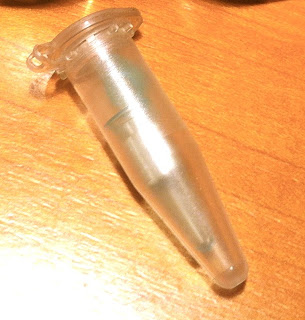 |
| Cancer signatures extend to epigenetic marks. Credits: Ana Costa |
Cancer's new signatures:
Epigenetic modifications are conserved among various metastases in the same person.
Today’s
EpiPost focuses on a new discovery concerning prostate cancer and its
metastases. The report published in Science Translational Medicine (23rd January 2013 ) highlights the need
for personalized medicine by showing that the patterns of epigenetic
modifications vary considerably between lethal prostatic tumours from different
men but are maintained within the tumour and metastases in the same person.
Epigenetics is the layer of genomic regulation
that is not due to the sequence of As, Ts, Cs and Gs in the DNA molecule, but
instead relies on chemical marks found in nuclear DNA and its associated
proteins. These epigenetic marks that sit on DNA, namely the methylation mark,
are very relevant from the point of view of physiology, as they may shape to
the way cells responds to stimulus, both from outside, and from inside the cell
itself. In recent years, scientists have observed that tumours display their
own patterns of DNA methylation and those differ from the ones found in the
“normal” cells of the same person. This observation led to the question: can
DNA methylation be used as a diagnostic biomarker for cancer?
So far, the general belief that DNA methylation
patterns varied too much in each patient's widespread cancers procrastinated
the development of diagnostic strategies or even therapies. Now, with the help
of new biochemical and computational technologies, scientists from the Johns
Hopkins University, in Baltimore, USA, made two seminal observations that may
change this view:
first, that the DNA methylation patterns were considerably altered between
tumours from different individuals; and second, that tumours and metastases
from the same individual had identical DNA methylation patterns. For this
analysis, the samples were obtained from autopsies of men who had died of metastatic
prostate cancer. Both samples from the various metastases, as well as samples
from normal tissues were collected for genomic comparisons.
The results
led the scientists to conclude that each cancer evolves to acquire its own
characteristic signature of DNA modifications, and that this epigenetic signature
is maintained at sites of metastases. This observation has a close parallel to
what is known about genetic alterations of tumours, which are also stable
within each individual. As with genetic alterations that contribute to the
onset and dissemination of cancer, epigenetic changes are also to be taken into
account when investigating the events leading to cancer progression.
The new
data revealed that new biomarkers of aggressive cancers lie in the epigenetic
landscapes of each patient’s cancer cells. Scientists believe that this
knowledge will help in the early identification of these forms of cancer and may
possibly contribute to the development of therapeutic strategies directed at
each person’s specific cancer epigenetic signatures.









